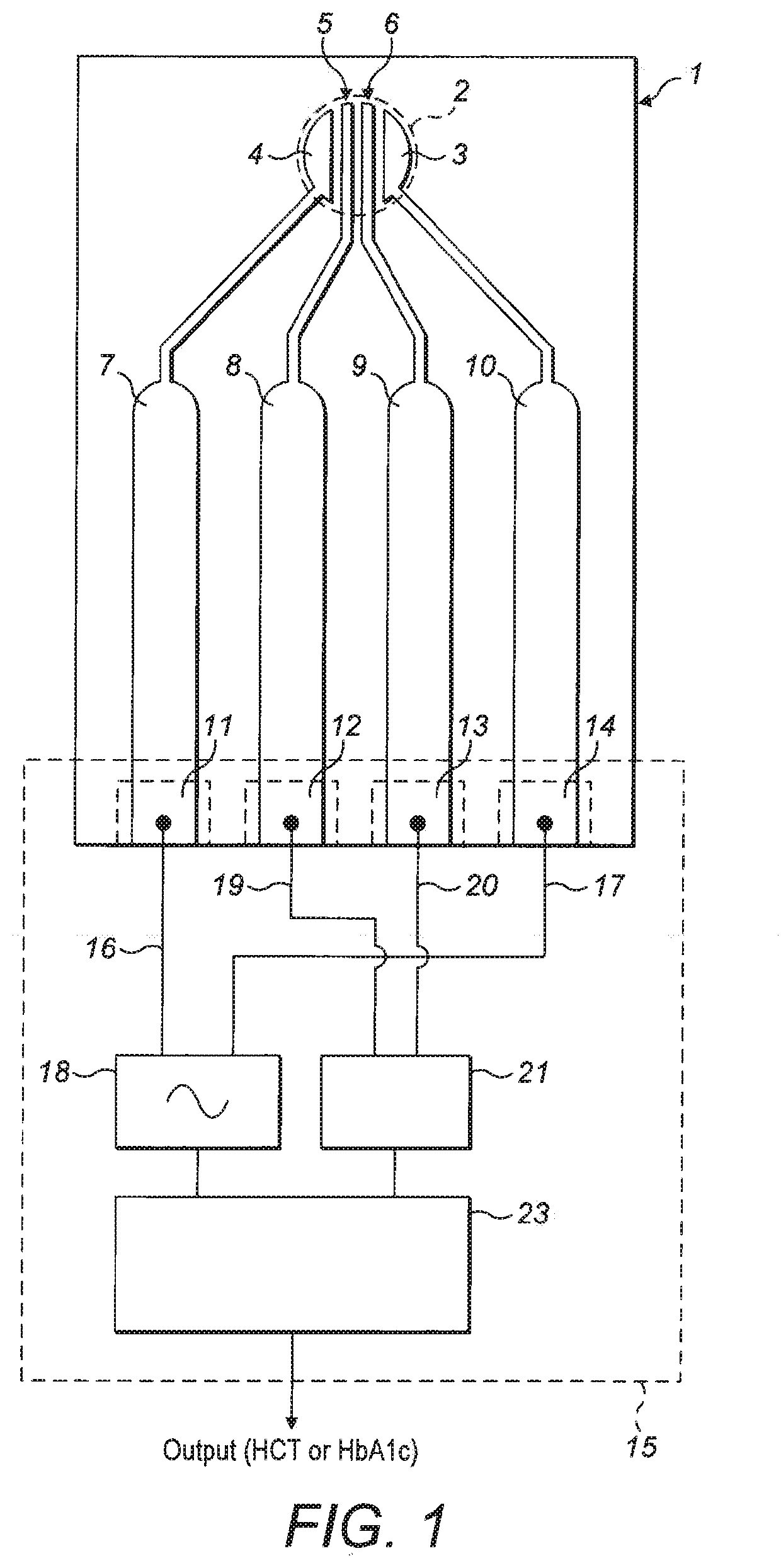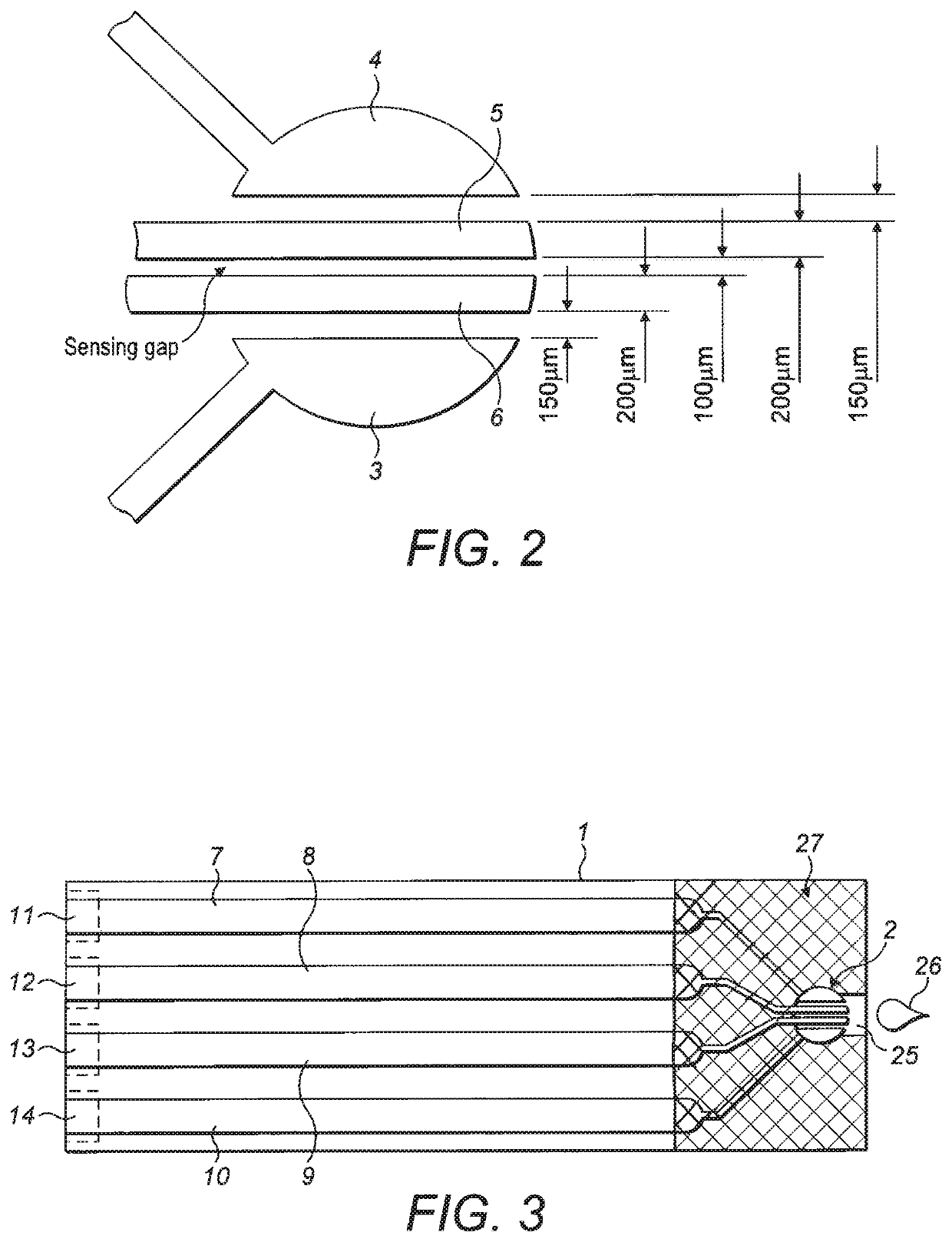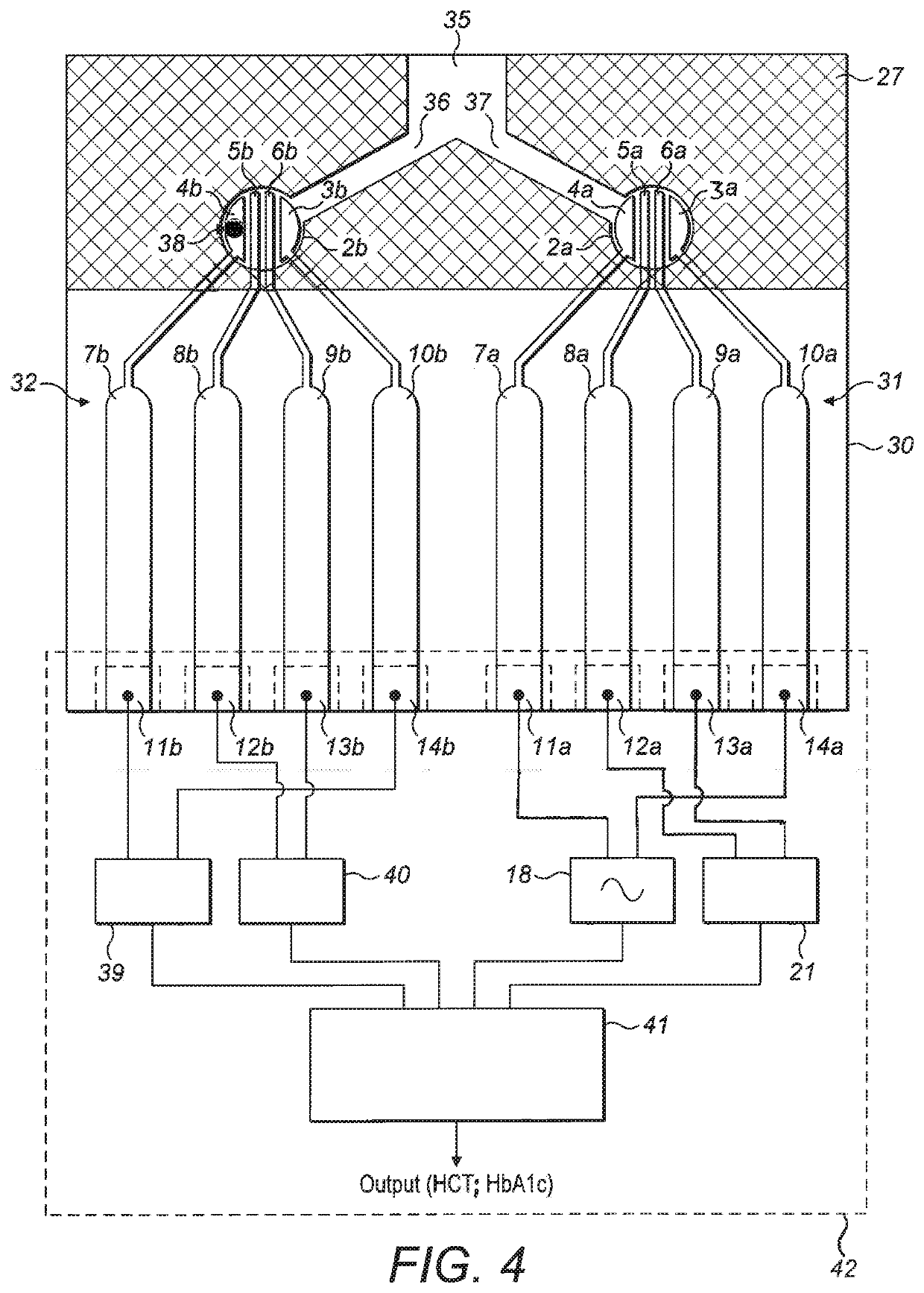Electrical impedance hematocrit and hba1c biosensor comprising sample plate and sample apparatus
a biosensor and electric impedance technology, applied in the field of sample measurement system, can solve the problems of red blood cells within blood samples that complicate the interpretation of blood glucose measurements using existing methods, and achieve the effects of reducing or eliminating complication, improving the accuracy of blood glucose measurements, and simplifying the interpretation of blood glucose measurements
- Summary
- Abstract
- Description
- Claims
- Application Information
AI Technical Summary
Benefits of technology
Problems solved by technology
Method used
Image
Examples
Embodiment Construction
[0062]In the drawings, like items are assigned like reference symbols.
[0063]FIG. 1 shows a sampling plate (1) in the form of a strip of firm and non-conductive material (e.g. plastic) possessing a circular sample zone (2) defined by a circular recess formed within the strip for receiving a liquid blood sample. Within the sample zone there are four electrode terminals (3, 4, 5, 6) formed upon a surface of the plate forming the floor of the sample zone and exposed for contact with a received sample. The electrode terminals each comprise a layer of inert conductive material, preferably Gold.
[0064]The four electrode terminals comprise two drive electrode terminals (3, 4) each of which is in the shape of a circular segment the curved edge of which coincides with a part of the circular edge of the circular sample zone. The straight segment edge of each one of the two drive electrode terminals is parallel to and opposes the straight segment edge of the other of the two drive electrode term...
PUM
| Property | Measurement | Unit |
|---|---|---|
| width | aaaaa | aaaaa |
| width | aaaaa | aaaaa |
| area | aaaaa | aaaaa |
Abstract
Description
Claims
Application Information
 Login to View More
Login to View More - R&D
- Intellectual Property
- Life Sciences
- Materials
- Tech Scout
- Unparalleled Data Quality
- Higher Quality Content
- 60% Fewer Hallucinations
Browse by: Latest US Patents, China's latest patents, Technical Efficacy Thesaurus, Application Domain, Technology Topic, Popular Technical Reports.
© 2025 PatSnap. All rights reserved.Legal|Privacy policy|Modern Slavery Act Transparency Statement|Sitemap|About US| Contact US: help@patsnap.com



